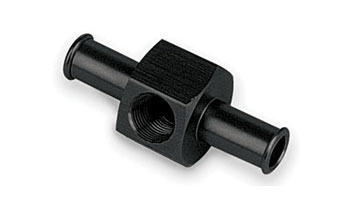In Line Fuel Pressure Adapter
An in line adapter is one of the most useful devices for a variety of reasons. It is a device that is able to connect two incompatible systems together, thereby making them compatible. An adapter can also be used for the purpose of attaching any kind of apparatus to a machine where it was not intended to be installed originally. This can greatly increase the features and functionality of any machine.
For instance, some people prefer to install a fuel pressure gauge for the carburetors of their cars. This can be accomplished with the use of an in line fuel pressure adapter. Before we can begin to understand this device, let us look in to the working of a fuel pressure gauge
What is a Fuel Pressure Gauge?
A pressure gauge is essentially a device which is used for the measurement of the amount of pressure maintained within compressed gas or liquid. While there are several uses for such an instrument, in terms of fuel pressure, it is usually installed inside the engine compartment itself. It could be attached to the feed line or the fuel-injector rail.
Since vehicle engines tend to rely on the pressure of the fuel to feed the engine, monitoring the amount of pressure prevalent inside the fuel system can be of utmost importance for the optimal performance of your car. Too little pressure could lead to the car not running, while too much could cause multiple damages to the system. A proper gauge can be installed in your car with the help of an in line fuel pressure adapter.
How to Use an In Line Fuel Pressure Adapter
Usually made of some kind of metal such as aluminum, a pressure gauge adapter is a small device with a female screw-like provision in the center. In order to install an in line fuel pressure adapter on a carburetor, the following steps could be useful:
- The negative as well as positive battery cables need to first be removed by loosening the nut wit a wrench. The cables can now be moved away from the battery.
- At the fuel inlet of the carburetor, the rubber fuel line needs to be located.
- Any fuel that still might be present inside can be captured by placing a rag under the car's fuel line and on top of the engine as well.
- Around six inches from the carburetor, cut through the rubber fuel line carefully.
- On the fuel pressure gauge itself, locate the inlet and the outlet nozzles.
- Using the in line fuel pressure adapter, insert the outlet nozzle of the gauge into the fuel line end that is attached to the carburetor and the inlet nozzle to the cut end of the fuel line.
- Using the hose clamps that were provided with the adapter, securely fix each end of the gauge.
- Replace the negative and positive battery cables.
- After an hour or so (allowing time for the fuel on the top of the engine to dry out), the car is now ready to use.
It is necessary to maintain a fuel pressure gauge and its adapter with timely cleaning. This device may be purchased from any car accessory store or on the internet from many websites selling car accessories.

- Home
- Types Of In Line Adapter
- 1 Line In Line Adapter
- 4 Port In Line Adapter
- Audio In Line Adapter
- Brake Line Fitting Adapters
- Duplex In Line Adapter
- Ethernet Power Line Adapter
- In Line Adapter Plate
- In Line Barrel Adapter
- In Line Control Adapter
- In Line Coupler Adapter
- In Line FME Adapter
- In Line Fuel Pressure Adapter
- In Line Hose Adapter
- In Line Modulator Adapter
- In Line Network Adapter
- In Line Y Adapter
- Line Level Adapter
- Phone Line Adapters
- Power Line Adapter
- Surge Protector In Line Adapter
- USB Line In Adapter
